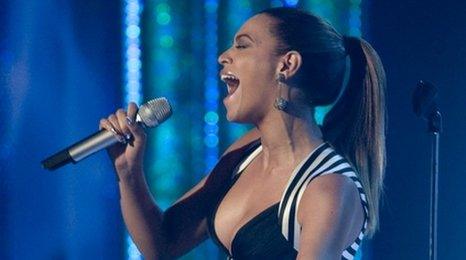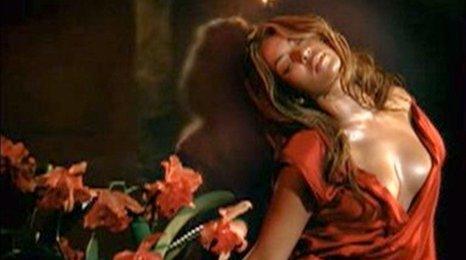Beyonce accused of copying moves from ballet
- Published
Beyonce is being accused of stealing dance moves for her new video Countdown from a famous choreographer.
The pop star admitted that a 22-second sequence was inspired by Belgian dancer Anne Teresa De Keersmaker, who created the ballet Rosas Danst Rosa.
However, Ms De Keersmaker said she had never been contacted for permission and called the pop video "pure plagiarism".
Beyonce said the ballet was "one of many references" for the video, which also pays homage to Andy Warhol.
A comparative clip on YouTube, entitled Beyonce vs Anne Teresa De Keersmaker, shows the similarities in the dance.
Beyonce acknowledged the debt, saying the original piece was "one of the inspirations to bring the song to life".
"I was also paying tribute to the film Funny Face with Audrey Hepburn."
She added: "My biggest inspirations were the 60s, the 70s, Brigitte Bardot, Andy Warhol, Twiggy and Diana Ross."
The co-director of Beyonce's video, Adria Petty, who claims to have showed the singer the contemporary ballet, has also issued a statement.
"[The original ballet] was refreshing, interesting, timeless," she said.
"Beyonce's YouTube video already has had close to two million views, so fans will discover all the tributes and then discover Audrey Hepburn, Warhol, Bardot and Rosas Danst Rosas and all the works that inspired me and shaped this video."
Filmmaker Thierry De Mey, who filmed a version of the ballet in 1997, said the plagiarism was obvious and added: "When I am doing a film or a show, the first thing to check is copyright, the rights to adapt a work of art."
Rosas Danst Rosas is one of the Belgian dance company's greatest hits and is still being performed around the world.
A spokeswoman for the dance troupe said they discovered the Beyonce video last week: "We noticed more than a few resemblances to the film. We have passed the details to our lawyer to see about our rights," she said.
Claiming legal ownership over a single dance move is difficult, although a sequence of moves could be protected if they were unique and the choreographer could prove they created them.
They would also have to show a substantial portion of the moves had been used without permission.
- Published17 February 2011

- Published17 November 2010

- Published31 August 2011
